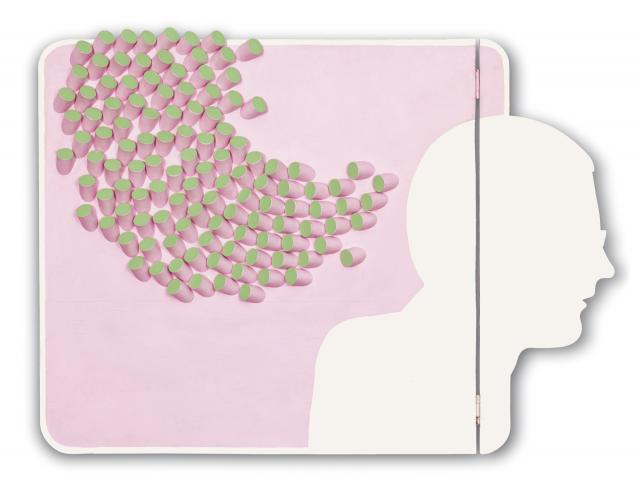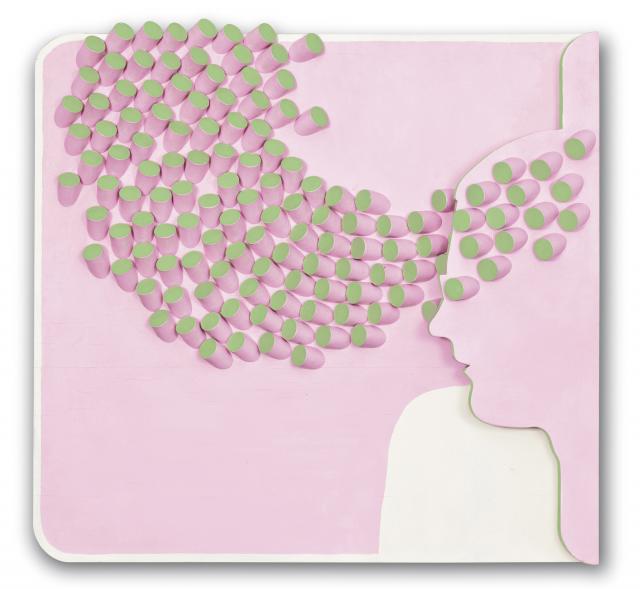The white silhouette of a man wearing glasses and seen in profile stands out from a slightly rectangular relief. Made up of two panels linked by hinges, the piece can be modified according to how the mobile panel is positioned. The face in profile can either go towards the right to stand out against the wall, the eyes looking off into the distance, or rejoin the whole and turn its gaze in the opposite direction. Thus, when the panel is open, a cloud of outgrowths seems to be escaping in an upward movement from the turned head. This multitude of reliefs in clusters, like little corks, might depict memory, a comet’s tail or reflection hovering in the air. And if we close the panel, the cut-out profile inverts its position and the movement of the outgrowths appears to take off from the upper part of the head, like metaphorical convolutions of thought. It passes through the eye and is projected forward in a dynamic whirl.
With this articulated relief, Raetz creates an image for the act of looking and the way it is grounded in the mind. Together, thought and the direction of one’s gaze form perception, which is in constant transformation according to the point of view. Only three hues are employed to colour the piece in its entirety, i.e., white on the torso and face, pink on the background and green to accentuate the volumes. This limitation of the artist’s palette, in a tonality that is both subdued and bright, situates the work in the vein of 1960s Pop Art.
The model for the profile was Walo von Fellenberg, a writer, photographer and Raetz’s partner in analysing the gaze. He is seen, moreover, in other wooden reliefs dating from 1966. It was also in the 1960s that Raetz first introduced his exploration of the construction and deconstruction of images in pointillist networks, as this relief attests. Indeed this work already crystallises the subjects that will eventually form the bulk of Raetz’s output. It aims to demonstrate, through a composition that places the human face front and centre, the degree to which the intellect and the eye are closely linked and interdependent.
With this articulated relief, Raetz creates an image for the act of looking and the way it is grounded in the mind. Together, thought and the direction of one’s gaze form perception, which is in constant transformation according to the point of view. Only three hues are employed to colour the piece in its entirety, i.e., white on the torso and face, pink on the background and green to accentuate the volumes. This limitation of the artist’s palette, in a tonality that is both subdued and bright, situates the work in the vein of 1960s Pop Art.
The model for the profile was Walo von Fellenberg, a writer, photographer and Raetz’s partner in analysing the gaze. He is seen, moreover, in other wooden reliefs dating from 1966. It was also in the 1960s that Raetz first introduced his exploration of the construction and deconstruction of images in pointillist networks, as this relief attests. Indeed this work already crystallises the subjects that will eventually form the bulk of Raetz’s output. It aims to demonstrate, through a composition that places the human face front and centre, the degree to which the intellect and the eye are closely linked and interdependent.

